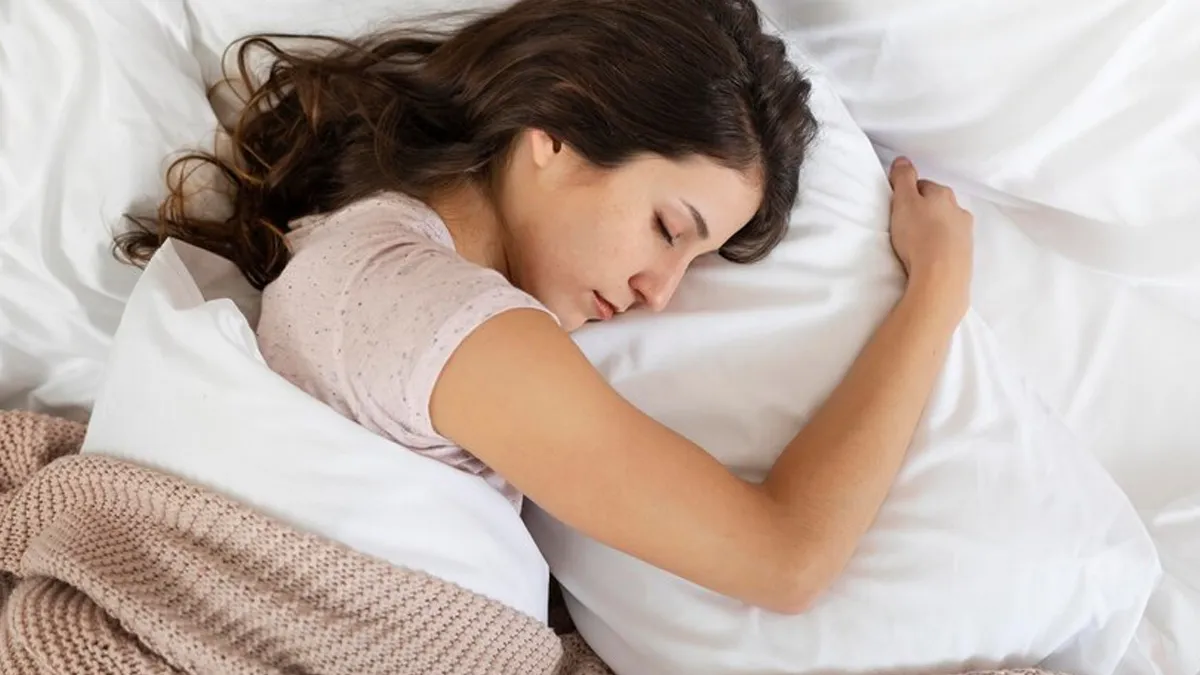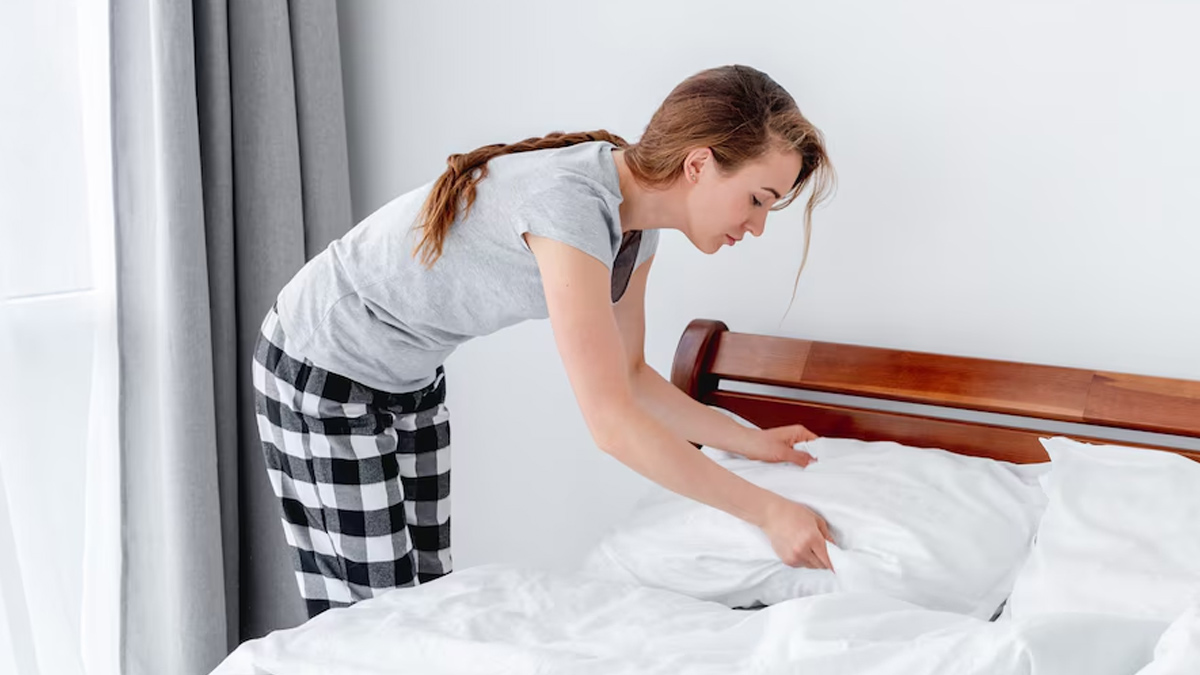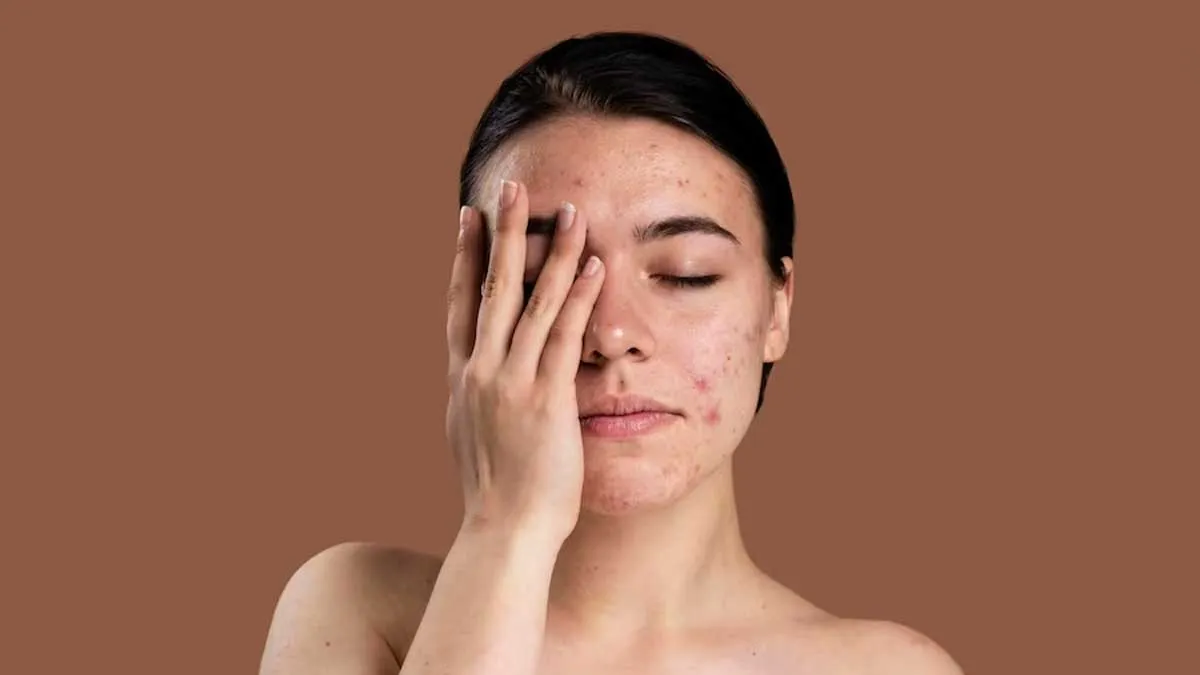
We shower, wash our faces, and sanitise our hands, yet how often do we wash the very sheets we sleep in each night? If you've been struggling with mysterious breakouts or waking up with a stuffy nose, your bed sheets could be the sneaky culprit. Dermatologists and allergists alike confirm that dirty bed sheets can be a breeding ground for bacteria that cause acne and allergy-causing irritants.
Table of Content:-
Therefore, to help you understand better, we spoke to our expert, Sanjeev Gulati, Department of Dermatology, Sharda Hospital, Noida, and here is what he shared with us.
Why Your Bedsheets Matter More Than You Think
Bedsheets, pillowcases, and blankets can look clean to the naked eye, yet after days (or worse, weeks) of wear, they become coated with sweat, body oils, dead skin cells, pet dander, dust mites, and bacteria. When your skin, particularly your face, remains in contact with these dirtiness night after night, it makes for the perfect storm of irritation, clogged pores, and allergic reactions.
Dirty Sheets and Acne: What's the Connection?
1. Bacteria Accumulation
Unchanged bed sheets are home to Propionibacterium acnes — the same acne-causing bacteria that live on your skin. Add heat and rubbing, and you've created a microclimate where pimples love to live.
Also Read: What Happens When You Accidently Use Someone's Towel? Expert Shares The After-math

2. Oil and Sweat Transfer
Body oils from your scalp and skin and sweat permeate pillowcases. The residue rubs back on your face, where it can clog pores and cause acne flares.
3. Friction and Irritation
Rough or dirty clothing can cause mechanical irritation, aggravating current pimples or bringing on new ones, particularly for individuals with sensitive or acne skin.
Allergies and Bedding: The Dust Mite Problem
1. Dust Mites and Their Waste
Beds are also valuable property for dust mites — tiny insects that dine on dead skin cells. Their waste and body parts are significant allergens for allergic rhinitis, eczema, and asthma.
2. Mold and Mildew
Damp conditions (particularly in warm, humid climates or where monsoons occur) favor the growth of mold on wet bedding. Mold spores are known to induce allergic reactions, including sneezing, nasal congestion, and watery eyes.
3. Pet Dander & Pollen
If animals sleep on your bed or windows are left open, your bedding can become laden with allergens such as pet hair and outdoor pollen, causing miserable nights for allergy patients.
Signs Your Bedding May Be Causing Skin or Allergy Problems
- Regular morning breakouts, particularly on the side of your face where you sleep (your pillow side)
- Sneezing or stuffiness mainly at night or in the morning
- Unexpected outbreaks of eczema or contact dermatitis
- Heightened sensitivity without altering diet or skincare routine

How Often Should You Wash Your Bedding?
Here are a few expert-advise explained by Dr Gulati to help you with your skin flare-ups and allergies:
- Pillowcases: Every two to three days
- Bedsheets: Once a week
- Blankets and Duvet Covers: Every two to four weeks
- Mattress Protectors: Every one to two months
"Wash in hot water to destroy germs and dust mites, and use fragrance-free, hypoallergenic detergent to minimise skin and respiratory irritation," he added.
Pro Tips for Skin-Safe Sleeping
- Take a shower before bed to make bedding cleaner for longer.
- Pin back long hair or wear a silk bonnet to limit oil transfer.
- Skip sleeping with makeup on to avoid dirt accumulation on your pillowcase.
- Opt for natural, breathable fabrics such as cotton or bamboo to reduce sweating and heat buildup.
- Invest in dust-mite-proof coverings if you have allergies.
Bottomline
Fresh sheets aren't a splurge, they're a skin and respiratory wellness must. Whether you're fighting persistent acne or chronic sneezing, taking better care of your bedding hygiene might be the solution you've been missing. So the next time your skin erupts on your face or your nose gets ornery, don't just examine your skincare habits, examine your sheets.
Also watch this video
How we keep this article up to date:
We work with experts and keep a close eye on the latest in health and wellness. Whenever there is a new research or helpful information, we update our articles with accurate and useful advice.
Current Version
